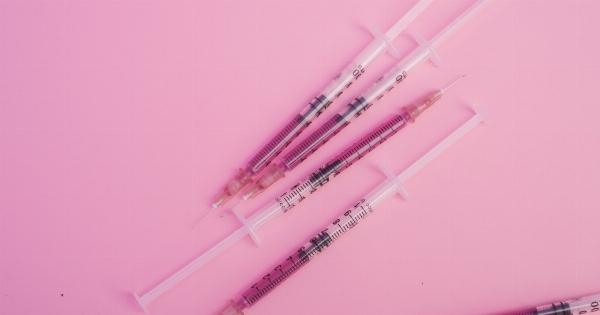A stroke occurs when the blood supply to the brain is interrupted or reduced, depriving brain cells of oxygen and nutrients. The long-term effects of a stroke can be devastating, leading to disabilities, cognitive impairment, and even death.
While strokes can happen to anyone, regardless of age or gender, some strokes are considered more hazardous than others. In this article, we will explore the most perilous type of stroke and its potential consequences.
Hemorrhagic Stroke: A Deadly Intruder
Among the different types of strokes, hemorrhagic strokes are often considered the most hazardous. Hemorrhagic strokes account for around 15% of all strokes and are caused by bleeding in the brain. There are two main subtypes of hemorrhagic strokes:.
1. Intracerebral Hemorrhage (ICH)
Intracerebral hemorrhage occurs when a damaged blood vessel within the brain bursts and leaks blood into the surrounding brain tissue. This bleeding can cause localized damage and compress nearby brain structures.
The two primary causes of ICH are hypertension (high blood pressure) and aging blood vessels.
2. Subarachnoid Hemorrhage (SAH)
Subarachnoid hemorrhage refers to bleeding that occurs in the subarachnoid space, the area between the brain and the thin tissues covering it.
This type of stroke is often caused by a ruptured aneurysm, a weakened spot in a blood vessel wall that balloons and may burst, allowing blood to escape and irritate the brain.
The Devastating Consequences
The hazardous nature of hemorrhagic strokes lies in their potential consequences and the high mortality rate associated with them. Some of the devastating effects include:.
1. Severe Brain Damage
As blood accumulates within the brain tissue or the subarachnoid space, pressure builds up and compresses delicate brain structures. This compression can cause severe brain damage and irreversible loss of brain function.
2. Physical Disabilities
Depending on the location and extent of the bleeding, hemorrhagic strokes can lead to physical disabilities.
Common disabilities include paralysis or weakness on one side of the body, difficulty speaking or understanding language (aphasia), and impaired balance and coordination.
3. Cognitive Impairment
Hemorrhagic strokes can also have a significant impact on cognitive function. Memory problems, difficulties with attention and concentration, and impaired problem-solving abilities are common cognitive impairments associated with this type of stroke.
4. Loss of Independence
Due to the physical and cognitive impairments caused by hemorrhagic strokes, many individuals lose their independence and require long-term care.
They may need assistance with basic activities of daily living and have difficulties returning to work or living alone.
5. Psychological Effects
The emotional and psychological impact of a hemorrhagic stroke cannot be overlooked.
Depression, anxiety, and mood disorders are common in stroke survivors, often stemming from the frustration of functional limitations and the challenges of adjusting to a new lifestyle.
Prevention and Treatment
While hemorrhagic strokes are dangerous, certain prevention measures can reduce the risk:.
1. Blood Pressure Control
Controlling high blood pressure is crucial in preventing hemorrhagic strokes. Regular check-ups, a healthy diet, exercise, and medications prescribed by a healthcare professional can help maintain optimal blood pressure levels.
2. Lifestyle Modifications
Adopting a healthy lifestyle can significantly reduce the risk of strokes. This includes quitting smoking, limiting alcohol consumption, eating a balanced diet rich in fruits and vegetables, and engaging in regular physical activity.
3. Early Detection and Treatment of Aneurysms
Identifying and treating aneurysms before they rupture is crucial in preventing subarachnoid hemorrhages.
Imaging tests like MRIs and angiograms can help diagnose and monitor aneurysms, allowing healthcare professionals to determine the best course of treatment.
4. Prompt Medical Attention
If you or someone you know experiences symptoms of a stroke, such as sudden numbness or weakness on one side of the body, difficulty speaking or understanding, severe headache, or loss of coordination, seeking immediate medical attention is crucial.
Timely intervention can improve outcomes and reduce the risk of severe complications.
The Importance of Stroke Education
Increasing awareness about stroke risk factors, symptoms, and prevention is essential in reducing the impact of this hazardous condition.
Educating the public, healthcare professionals, and caregivers can lead to early detection, prompt treatment, and improved outcomes for stroke patients.



























